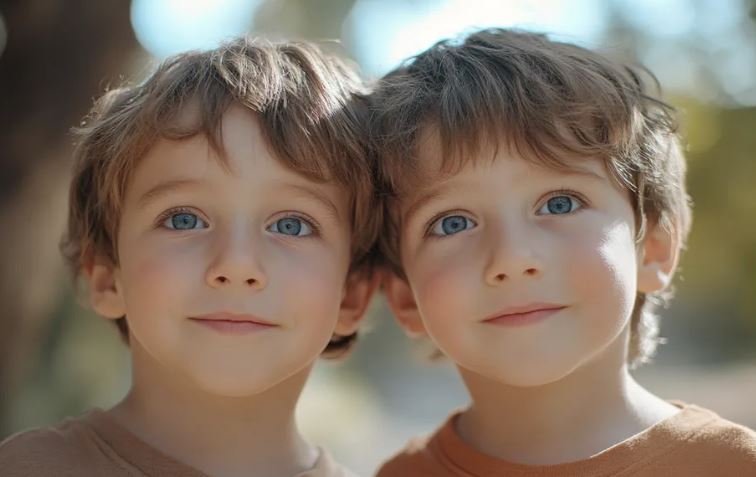Explore the reasons behind the decline in dressing up for outings. Discover societal shifts, comfort trends, and the impact of casual culture on fashion choices.
Dressing Up-Fashion has always been a reflection of society’s culture, values, and trends. However, one noticeable shift in recent years is the decline of formal or stylish dressing when going out. Gone are the days when people would meticulously plan their outfits for a dinner party, a movie night, or even a flight. Today, casual and comfortable clothing dominates the streets, restaurants, and even some workplaces.
But why has this shift occurred? What has led people to abandon dressing up for more relaxed and informal styles? Let’s explore the reasons behind this change and its impact on fashion, culture, and social norms.
Dressing Up-The Evolution of Fashion and Dress Codes
The Golden Era of Dressing Up
In the early to mid-20th century, dressing up was an essential part of daily life. People wouldn’t leave their homes without being well-dressed, regardless of their destination. Whether going to work, a social event, or even the grocery store, a polished appearance was expected.
Men frequently wore suits, dress shoes, and hats, while women adorned elegant dresses, heels, and accessories. Fashion was synonymous with sophistication and social class, and the way someone dressed often influenced how they were perceived by others.
The Rise of Casual and Comfort-Driven Fashion
As the decades progressed, a shift toward casual fashion began. The 1960s and 1970s introduced a sense of rebellion against strict dress codes, leading to more relaxed clothing styles. The 1990s and 2000s saw the rise of athleisure, streetwear, and oversized clothing, further emphasizing comfort over formality.
Fast forward to today, and casual wear has become the norm. Sneakers, leggings, hoodies, and jeans dominate everyday fashion, while formal attire is reserved primarily for weddings, high-end events, or business settings.

Reasons Why People Don’t Dress Up Anymore
1. The Influence of Casual and Athleisure Trends
Casualwear has taken over mainstream fashion, thanks to brands promoting comfort-driven clothing. Athleisure—clothing designed for athletic activities but worn as everyday wear—has particularly influenced how people dress.
Brands like Nike, Adidas, Lululemon, and Yeezy have redefined fashion by making sweatpants, sneakers, and hoodies acceptable in nearly every setting. This shift means people no longer feel the need to wear formal attire unless the occasion demands it.
2. Changing Social Norms and Expectations
Social expectations around clothing have drastically changed. Where dressing up was once a social obligation, today, personal expression and comfort take precedence. People are no longer judged harshly for choosing casual outfits over formal ones.
The younger generations, particularly Millennials and Gen Z, prioritize authenticity and individuality in fashion. Instead of conforming to traditional dress codes, they embrace styles that reflect their personality and lifestyle.
3. The Impact of Work-From-Home Culture
The COVID-19 pandemic significantly altered the way people dress, particularly in professional settings. With the rise of remote work, many employees swapped their office attire for sweatpants and T-shirts. Even as offices reopened, the demand for business casual and relaxed workwear remained strong.
Many companies now allow employees to dress casually, reducing the need for people to invest in formal clothing. This shift has further normalized dressing down in both professional and social settings.
4. The Rise of Fast Fashion and Disposable Clothing
Fast fashion brands such as Shein, Fashion Nova, and H&M have made trendy and affordable clothing accessible to everyone. However, these trends often prioritize casual and relaxed styles over formal and structured fashion.
With new trends constantly emerging, people are more likely to purchase inexpensive, casual outfits that align with the latest fashion rather than invest in high-quality, dressy pieces.
5. The Decline of Formal Events
Another reason people don’t dress up as often is the decline of formal social events. Decades ago, attending a theater performance, dining at a fine restaurant, or even flying on an airplane was considered an occasion worth dressing up for.
Today, most social gatherings are informal. Whether it’s meeting friends at a café, attending a casual dinner party, or going on a low-key date, there’s less pressure to dress in formal attire. Even weddings and special events have relaxed dress codes, allowing guests to prioritize comfort.
6. Celebrity and Influencer Culture
Celebrities and influencers play a massive role in shaping fashion trends. In the past, Hollywood stars and public figures were seen wearing glamorous outfits, setting a standard for elegance.
However, today’s influencers and celebrities often embrace casual, everyday looks. Streetwear, minimalist fashion, and effortless styling are more popular than ever, leading the general public to follow suit.
7. The Shift Towards Sustainability and Minimalism
Sustainability has become a key concern in fashion. Many people are moving away from excessive clothing purchases and focusing on building a minimalist wardrobe. This often means investing in high-quality, versatile pieces that lean towards casual or business casual rather than formalwear.
Additionally, thrifting and secondhand shopping have gained popularity, and many vintage items reflect more relaxed, everyday styles rather than highly formal attire.
The Impact of Casual Dressing on Society
The Blurring of Formal and Casual Fashion
With formal and casual fashion blending together, it’s becoming harder to define strict dress codes. Offices, restaurants, and social gatherings are no longer bound by traditional rules, giving people more freedom to dress as they please.
While this shift promotes inclusivity and comfort, it also raises the question of whether society is losing a sense of elegance and sophistication in everyday dressing.
How Dressing Affects Confidence and Behavior
Studies suggest that the way people dress can impact their mood, confidence, and behavior. While casual dressing offers comfort, dressing up can boost self-esteem and create a sense of professionalism and motivation.
Some psychologists argue that “enclothed cognition” (the way clothing influences thought processes) plays a role in productivity and social interactions. Wearing well-put-together outfits can create a sense of purpose and improve first impressions.
The Future of Fashion: Will Dressing Up Make a Comeback?
Fashion trends are cyclical, meaning that dressing up may return in the future. Recently, there has been a growing appreciation for vintage-inspired, polished looks. Designers are reintroducing structured silhouettes, tailored suits, and elegant dresses, signaling a possible revival of formalwear.
However, the demand for comfort remains high. The future of fashion may lie in a balance between stylish yet comfortable outfits that merge classic elegance with modern practicality.
Conclusion: Dressing Up in a Casual World
The decline of dressing up is a result of evolving social norms, the rise of casual fashion, and changing lifestyle habits. While casual dressing has become the new norm, there is still a space for elegance and sophistication in fashion.
Ultimately, fashion is about personal expression. Whether dressing up or dressing down, what matters most is feeling confident and comfortable in one’s own style.

